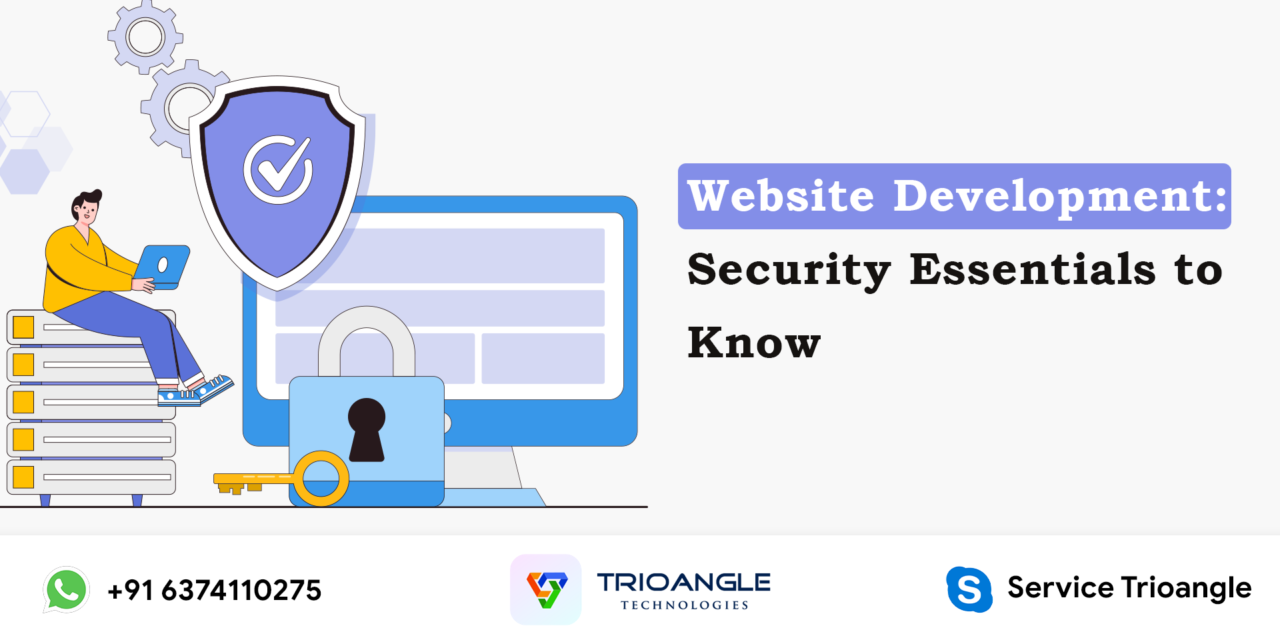The internet is the most valuable invention of the modern world. The need for the internet has risen even more after improving internet speeds. Web applications, which run on the internet, offer a digital experience without the need to download.
Business owners are eyeing Website Development Services as they become the preferred touchpoints of users. However, cybercriminals are also increasing alongside. From miniature to large websites, the common problem that they face is hacking. This makes web application security a serious concern.
To protect your website from hackers, website owners need to be aware of the consequences. This article will help startups with what way a website can be protected.
Jump in to know more!
What are web application security best practices?
Web application security is the use of tools, strategies, and best practices to prevent web apps from failing when under attack. It protects data and valuable information from breaches. Unfortunately, web app source codes are usually very complex, creating it easier for vulnerabilities to go attend.
The list of important web application security best practices to keep and mind as you harden your web security are below.
Cookies Security:
Cookies save details like passwords and names of the users. Almost all websites use cookies, and they are necessary for both website owners and users. These cookies are vital to identify users’ needs and providing a better experience.
What will happen if the cookies are found?
Hackers can pretend to be another person and gain privileges in a web application if the cookies are exposed or compromised.
To protect the user’s data from hackers, Some essential things are to be considered. The sensitive data of the user should not be stored in cookies. Secondly, the expiration date for the cookies should be fixed so that data in cookies can not be accessed. Lastly, the cookies of the users are encrypted.
By implementing cookies in this way, you can raise web application security.
Maintain Your Web App Updated
Website owners update an entire software, all the third-party services, and liberties. Hackers often employ third-party software to invade the main system, so they must aware of these threats. This is the place where your web app’s documentation will help a lot.
The documentation and libraries should be looked at to get rid of ones that don’t make any difference to your app and update everything that remains. Building an update strategy, and updating libraries may sound easier. Many developers also wish not to update third-party services for their software as they may lack compatibility.
You can avoid vulnerabilities in the framework by making sure you use all the libraries incorporated into your software and using the latest version of each library.
Prioritize vulnerabilities in Web App
Whether your application is a single web app or multiple Web development company , websites contain vulnerabilities. Vulnerabilities that need to eliminate and leave the rest by prioritizing them can be identified.
The five eccentric ways to prioritize the vulnerabilities are below.
Severity:
severity vulnerability depends on CVSS rating.
Application Type:
Address web applications with sensitive data first.
Popularity:
One can treat vulnerabilities based on the popularity of the vulnerabilities.
Disclosure Date:
Organizations that are not able to constantly look after a wide range of vulnerabilities set a date to start resolving the vulnerabilities.
Ease of Remediation:
One can prioritize the vulnerabilities and resolve them based on the level of correction required.
By using the most proper method and focusing on the handful of vulnerabilities, you can resolve them and save time.
Encrypt your Web App Data
Another way of securing a web application is encrypting the data. You need to encrypt all the data in the web application to get this. The data includes passwords, credit card details, passphrases, demographics, personal details, and more.
One needs to encrypt data-at-rest as well as the data in transit. By doing so, the data can be accessed by users with proper permissions.
Besides protecting these data, one should ensure that a web app is up-to-date with the latest SSL certificate. A web application must have HTTPS security.
Finally, passwords and IDs are encrypted with the best hashing algorithms. It helps you to save web app data efficiently.
Implement Real-time Security Tracking:
Tracking security is another web application security best practice. Vulnerability can be removed and discovered in the web application by doing a security audit. But you need constant monitoring to protect web applications. Equally, you can consider a web application firewall.
A web application firewall gets all the things required for real-time tracking of web application security. At times, web application security offers errors that do not exist, and web application security might get compromised.
To protect a web application, one best practice is to connect two security standards. It could be WAF with a vulnerability scanner or any other tool.
Keeping a website secure may be complex work for a non-technical person. In order to follow these ways, you can have help from a Web app development company. For more information about our services, contact us at the information below.
Consider Automation For Managing Web App Attacks
Developers have become quite cautious about vulnerability management. Developers take care when working on the web application by implementing the best security techniques. Despite this, there is no assurance that your web application will save you from hacking.
An organization should join an automatic tool such as a web application security scanner. The scanner notices all the attacks at an early stage, decreases the possibility of human errors, and determines all things effortlessly.
Bottom Line:
We have examined an in-depth guide on web application security. It is interesting how many options are there for optimizing website security. You have known the essentials of web application security and the best practice to remove threats in a web application.
We hope this blog gave you enough information on web app development security. By now, you get how the process is going to be. Still, if you need a clear detail, contact our Web Development Services team.





